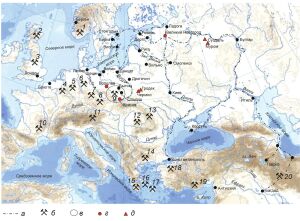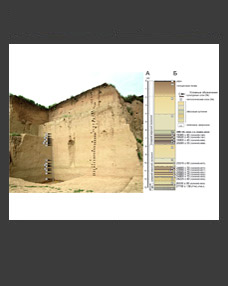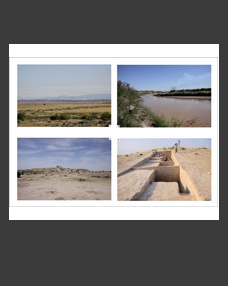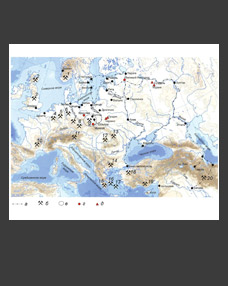 Oleg M. Oleynikov1,* and Andrey V. Chugaev2,**
Oleg M. Oleynikov1,* and Andrey V. Chugaev2,**
1Institute of Archaeology RAS, Moscow, Russia
2Institute of Geology of Ore Deposits, Petrography, Mineralogy and Geochemistry RAS, Moscow, Russia
*E-mail: olejnikov1960@yandex.ru
**E-mail: vassachav@mail.ru
Keywords: medieval Novgorod, Olkusz, Silesian-Krakow Pb-Zn region, lead ingots, lead isotope analysis, ore sources.
The article presents evidence of the spread of products from the Silesian-Krakow mining region (Poland) in Russian lands. The objects of the study included a fragment of a hemispherical massive lead ingot and a cluster of lead drops found in Trade District of Veliky Novgorod, near the Church of the Transfiguration of the Savior and the Znamensky Cathedral. The finds come from layers of the mid-14th century AD and represent high-quality lead raw materials (over 99% Pb). Their chemical composition and Pb isotope composition are identical to two intact massive hemispherical lead ingots of the first half of the 13th – first half of the 14th century AD found in Wroclaw and Krakow. Based on the similarity of the Pb isotope composition of the Novgorod finds and Polish ingots, on the one hand, and on their identity in this parameter with the lead-zinc deposits of the Olkusz ore field, a part of the oldest Silesian-Krakow mining region of Europe, on the other hand, it can be concluded that lead raw materials arrived in Rus in the Middle Ages from Eastern Europe. The materials presented in the article significantly expand the geography of lead trade in the 13th–14th centuries AD and confirm V.L. Yanin’s statement that the Hansa did not have a monopoly on the import of lead to Rus, since it could be imported by another Novgorod counterparty – Poland.







